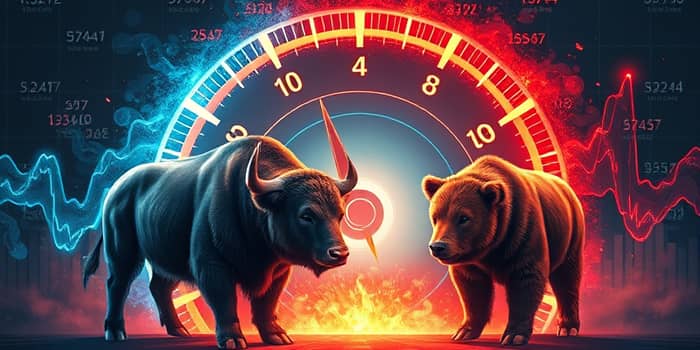
Markets are driven as much by emotion as by fundamentals. The Fear & Greed Index offers a clear window into collective investor psychology, helping individuals make more informed decisions in turbulent times.
By quantifying investor emotions on a simple 0-to-100 scale, this index shines a light on extremes of optimism and pessimism. Whether you are a novice investor or a seasoned trader, understanding this tool can be a game-changer.
The Fear & Greed Index was devised by CNN Business to measure market sentiment, providing a quick snapshot of whether investors are driven by fear or greed.
At its core, the index helps you navigate market volatility by revealing when assets may be overbought or oversold due to collective emotion rather than intrinsic value.
Over the years, it has become a powerful decision-making tool for investors, fund managers, and financial advisors seeking to balance risk and reward.
The index combines seven key indicators into a single score. Each component is normalized to a 0–100 range, then averaged equally. This ensures no single factor overwhelms the final reading.
The Fear & Greed Index is scored on a scale from 0 (extreme fear) to 100 (extreme greed). Scores are grouped into categories that signal market posture:
Each component contributes equally to the final reading. If the market shows mixed signals in different indicators, the averaging process balances out extremes for a holistic sentiment measure.
Understanding the Fear & Greed Index empowers you to time decisions and manage risks more effectively. Here’s how you can apply it:
For example, during periods of extreme fear, bargain-hunters often find undervalued assets ripe for purchase. Conversely, extreme greed may warn you that overpriced assets could face sharp corrections.
By tracking the index over time, you’ll begin to see patterns: sentiment extremes often precede market reversals, making this a vital tool for identifying potential market reversals and adjusting strategies accordingly.
To make the most of the Fear & Greed Index, consider these guidelines:
By integrating the Fear & Greed Index into your routine, you’ll develop a disciplined approach to investing that leans on evidence rather than emotion.
The Fear & Greed Index stands out as a straightforward yet powerful tool for market navigation. By distilling complex data into an accessible gauge, it allows investors to respond to shifts in sentiment and make better-informed choices.
Whether you’re building long-term wealth or trading actively, keeping an eye on investor emotions can be the difference between seizing opportunities and succumbing to herd mentality. Embrace the Fear & Greed Index as part of your toolkit to empower confident investment decisions and navigate market highs and lows with greater clarity.
References













